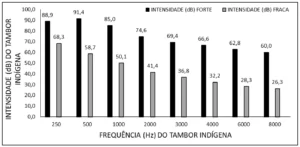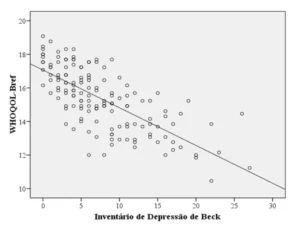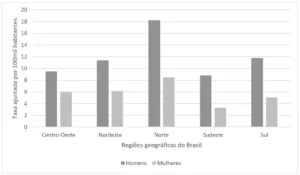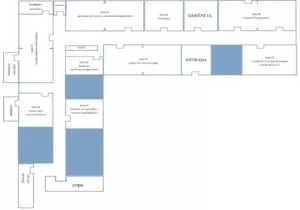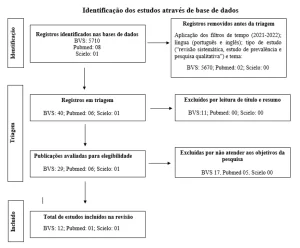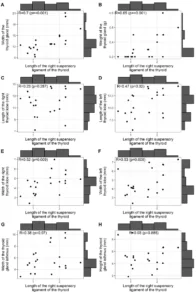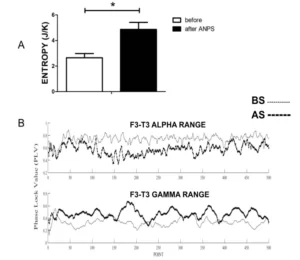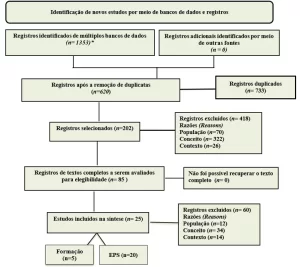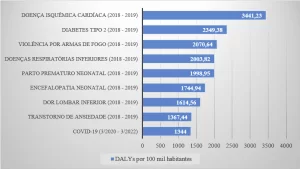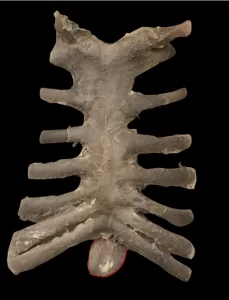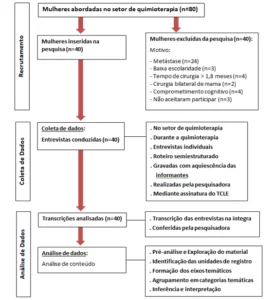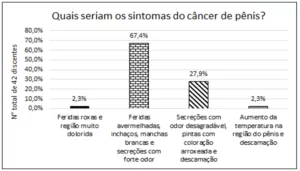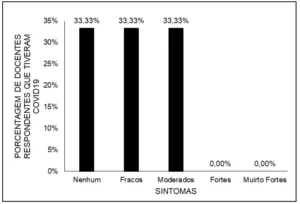ORIGINAL ARTICLE
MELO, Arlen Maia de [1], PASCOAL, Rosana Moraes [2], SOUZA, Keulle Oliveira da [3], MOREIRA, Elisângela Claudia de Medeiros [4], DIAS, Claudio Alberto Gellis de Mattos [5], NAZARÉ, Mailson Lima [6], FECURY, Amanda Alves [7], DENDASCK, Carla Viana [8], PIRES, Yomara Pinheiro [9], TRUSEN, Sylvia Maria [10], OLIVEIRA, Euzébio de [11]
MELO, Arlen Maia de. et al. The health and environment relationship of the peoples of the Amazon rainforest. Revista Científica Multidisciplinar Núcleo do Conhecimento. Year. 07, Ed. 04, Vol. 01, pp. 05-17. April 2022. ISSN: 2448-0959, Access link: https://www.nucleodoconhecimento.com.br/health/health-and-environment, DOI: 10.32749/nucleodoconhecimento.com.br/health/health-and-environment
ABSTRACT
The present work arose from the reflections arising from the classes taught in the field of health, society and the environment, at the PPGEAA (Programa de Pós-graduação em Estudos Antrópicos na Amazônia) and aims to articulate the relationships between these conceptions from the intertwining with the thematic proposal arising from the student research project presented to the program. To this end, this article presents a study on cosmologies and indigenous thought with regard to the way in which these societies organize themselves, coexist and conceive the triad of health, society and environment. Even so, it is necessary to understand the multiple ways in which these societies conduct their social practices based on their beliefs recurrently interconnected with elements present in nature. The methodology used in this work consists of bibliographical research from the selection of texts that dialogue with the thematic proposal in question. The theoretical framework of this research is based on the work of authors who focus on the concepts treated or who in some way complement the dialogue of this research. The knowledge, beliefs and practices disseminated through the indigenous tradition were, for a long time, marginalized, ignored or mistakenly viewed by the foreign gaze and the ethnocentric issue in the figure of the colonizer. With that, it is expected with this work, to provide a critical, plural and interdisciplinary interpretation from the reflection on the indigenous thought in the present time.
Keywords: Health, Environment, Indigenous peoples, Ethnocentrism.
INTRODUCTION
Indigenous societies developed over time different ways of relating to nature, which differ from the thinking of non-indigenous peoples. This notion based on respect and care for the environment is visibly evidenced by the fact that the indigenous conception of nature goes beyond the space in which they are inserted. The different ways of organizing and relating in the different spaces, in which the various indigenous ethnic groups are consolidated, are constituted under another configuration of thought, thus different from the exploratory conception promoted by the ideals of “progress” of the European white man.
In this first reflection, the preservation of customs and practices of indigenous societies maintained and passed on in their tradition is evident, thus considering, in principle, the respect and fight against the exploitative exhaustion of nature as a way of ensuring the balance of the actions of the subjects in their particular spaces. In this way, the conception of thought in which the indigenous cosmogonies of various regions of Brazil are centered, presents itself as a form of resistance to the depletion of natural resources based on the profitability of a certain group. In this way, as highlighted by the important indigenous leader today, Ailton Krenak, in his “Ideias para adiar o fim do mundo” (2019), about the new forms of indigenous social organization today after the overwhelming process of colonization caused to the peoples of forest, the author notes that:
[…] as populações indígenas não sobreviveriam à ocupação do território, pelo menos não mantendo formas próprias de organização, capazes de gerir suas vidas. Isso porque a máquina estatal atua para desfazer as formas de organização das nossas sociedades, buscando uma integração entre essas populações e o conjunto da sociedade brasileira. (KRENAK, 2019, p.39)
Krenak (2019) raises important questions about the problems faced by various traditional indigenous peoples and communities that have suffered over the years from the major impacts caused as a result of the advance of “industrialization”, including camouflaged under the discourse of “modernization” and of “progress”. These implications have a strong impact on ways of living, health, and the space in which the various indigenous ethnic groups are inserted today, as examples, the issues of struggles for rights, land demarcation, the guarantee of health and basic rights to these populations, the development of projects aimed at preserving the forest, the fight against the constant exploitation of natural resources, among other subjects that are in recurrent debates by indigenous peoples.
The relations established between the environment and the way of organizing themselves in society for the indigenous peoples of the Amazonian interior have been consolidated, for a long time, through tradition. The different practices and knowledge related to the knowledge of the elements present in nature, resisted and became known by other non-indigenous peoples over the years, mainly through the work and dissemination of the literary records of many travelers and ethnologists who carried out several expeditions through the region forest from the end of the 19th century. As a result, sacred rituals, customs, cultural practices, including linguistic diversity originating from forest peoples, managed to resist the invisibility process provided by European colonizing ideals in which the figure of the indigenous subject was considered only as a factor related to the “stranger” and “wild”.
Indigenous peoples have established, over the years, a relationship with nature in which respect for the means of livelihood extracted from the earth prevails. Because of this, the issue of balance in the existing actions between the subject and the space in which he is inserted is perceived, taking only what is necessary from it. On the question of this knowledge disseminated by the indigenous tradition and its relationship with nature, it is noted from the thought of Santos (2000) that:
As populações, acostumadas a enfrentar, com seus próprios recursos, enfermidades que às vezes desconheciam, criaram novas técnicas de uso, descobrindo novas finalidades para as plantas que já conheciam, a partir dos dados recém incluídos no seu dia-a-dia. Os saberes amazônicos, sistematizados em seus diversos matizes – indígenas e caboclos, seringueiros, madeireiros, pescadores, colonos, garimpeiros, balateiros, regatões etc.-, consolidaram-se em suas práticas, destacando o uso dos “remédios do mato” como um dos seus traços culturais mais marcantes. (SANTOS, 2000, p.926)
In the author’s conception, the various peoples that constituted themselves in the Amazonian space, inhabitants of the region, had their own organizations with regard to knowledge of medicinal plants, the cure of certain diseases, among other characteristics that, in turn, expand this widespread knowledge from generations.
On the other hand, understanding the rights to health involving traditional indigenous populations is a subject that has been intensely discussed in recent years, which came to the fore through the protagonism and social struggles of various indigenous leaders across the country. This was mainly due to the invisibility to which indigenous peoples were subjected over time. As pointed out by Rocha; Porto and Pacheco (2019), on recent indigenous conquests, highlight that:
[…] Em consonância com a ressignificação do direito à saúde, promovida pela Reforma Sanitária Brasileira, eles pressionaram por uma política específica para a saúde indígena. O marco desta luta foi a realização da 1ª Conferência Nacional de Proteção à Saúde do Índio, em 1986. Até então, a atuação do Estado nesse campo havia sido marcada por iniciativas pontuais e por campanhas de combate a doenças nas aldeias, que incluíam os povos indígenas como parte da população-alvo, mas sem qualquer contextualização de suas condições de vida ou especificidades socioterritoriais. (ROCHA; PORTO; PACHECO, 2019, p.384)
It is clear, therefore, that the achievements directed to indigenous communities in terms of health, reached in this period, some specific cases that did not significantly cover the broad context to which indigenous populations are subjected. To this end, some examples such as the advance of deforestation, intensive mining processes and the expansion of sectors such as agribusiness in the country, caused various impacts on the health of indigenous peoples, as the authors highlight:
[…] transformações sociais, culturais, ambientais e econômicas contribuíram para que problemas de saúde característicos da pobreza e da vulnerabilidade social, como as doenças infecto parasitárias (principalmente tuberculose, malária e parasitas intestinais), anemia e desnutrição, permaneçam importantes no quadro de morbimortalidade, ainda que em muitos desses povos já tenham iniciado um processo de transição epidemiológica, no qual as doenças crônicas teriam maior relevância nas taxas de mortalidade. (ROCHA; PORTO; PACHECO, 2019, p.385)
In this sense, the worsening of cases of diseases in indigenous communities comes from this masking of the impacts caused on nature in the name of the “economic growth” of the country. In contrast to this, indigenous populations have very different conceptions of nature from each other, thus having a particular way of viewing the environment and the relationship they establish with it. In this sense, what prevails in this thinking about space reaffirms the idea of a network of relationships between the natural environments of the forest, as well as the interaction between man and nature among indigenous peoples.
With regard to the discussion regarding the concept of health, Segre and Ferraz, in their article “O conceito de saúde” (1997), highlight the outdatedness attributed to the definition by the WHO. According to the authors, the concept that is conceived under “the absence of disease, but as the situation of perfect physical, mental and social well-being” would not correspond to a precise definition of the term. Thus, the article outlines objections to the aforementioned definition because: “It is an unrealistic definition because, alluding to ‘perfect well-being’, it posits a utopia. What is ‘perfect well-being?’ Is it possible to characterize ‘perfection’?” (SEGRE; FERRAZ, 1997, p. 539). Still, the authors complement this thought by emphasizing that:
Não se deseja, enfocar o subjetivismo que tanto a expressão “perfeição”, como “bem-estar” trazem em seu bojo. Mas, ainda que se recorra a conceitos “externos” de avaliação (é assim que se trabalha em Saúde Coletiva), a “perfeição” não é definível. Se se trabalhar com um referencial “objetivista”, isto é, com uma avaliação do grau de perfeição, bem-estar ou felicidade de um sujeito externa a ele próprio, estar-se-á automaticamente elevando os termos perfeição, bem-estar ou felicidade a categorias que existem por si mesmas e não estão sujeitas a uma descrição dentro de um contexto que lhes empreste sentido, a partir da linguagem e da experiência íntima do sujeito. Só poder-se-ia, assim falar de bem-estar, felicidade ou perfeição para um sujeito que, dentro de suas crenças e valores, desse sentido de tal uso semântico e, portanto, o legitimasse. (SEGRE; FERRAZ, 1997, p. 539).
The discussion of these concepts in which the importance of the other is understood, as well as their relationship with the environment and the notion of nature, bring to discussion not only the complexity and diversity of the thinking of the indigenous inhabitants in these localities, but also, develop a relationship directly with space and go beyond natural phenomena.
According to these statements, it is understood that there is a close relationship with the environment and health in cosmogonies and indigenous thought that are strongly accentuated in rituals, cultural expressions, in obtaining resources present in the forest, etc. Therefore, it is understood that these propositions between the indigenous view and the different ethnic peoples are of paramount importance for understanding this traditional knowledge.
ETHNOCENTRIC THINKING AND THE REDUCTIONIST NOTION OF THE OTHER
The discussion about the relationship of superiority or inferiority to which indigenous cultures are inserted falls on the ethnocentric question. The wrong thinking attributed to indigenous societies is still configured as support for cultures to consider themselves superior or considered inferior in relation to each other. This thought impacts indigenous societies, mainly because it is a reductionist thought of the other. Thus, Meneses (1999), in his work on Etnocentrismo e relativismo cultural: algumas reflexões, highlights that:
[…] o etnocentrismo julga os outros povos e culturas pelos padrões da própria sociedade, que servem para aferir até que ponto são corretos e humanos os costumes alheios. Desse modo, a identificação de um indivíduo com sua sociedade induz à rejeição das outras. O idioma estrangeiro parece “enrolado” e ridículo; seus alimentos, asquerosos; sua maneira de trajar, extravagante ou indecente; seus deuses, demônios; seus cultos, abominações; sua moral, uma perversão etc. (MENESES, 1999. P. 19)
Therefore, with this thought, the notion of reduction or even elimination of alterity is evident, due to the constant desire to extirpate the other. The established “other view” of the non-indigenous about the indigenous is configured as a factor of depreciation. The denial of what is considered different, therefore, an “other” figure led to marginalization and social submission, are concentrated in the field of estrangement.
This “strange” factor for this or that culture that collides or comes into conflict is presented under the notion of difference. One can also perceive the estrangement of different peoples and cultures in relation to indigenous peoples, insofar as they recurrently attribute to the figure of indigenous peoples the category of what would be understood as strange, wild subjects and, because of this, peoples who they would be backward and therefore lead to marginalization and subject to domination. About this reductionist and oppressive thought of this other that is led to the process of marginalization Meneses points out:
Mas rejeição do Outro, combinada com a dominação, assume também outra forma: não tirar a vida do Outro, mas apenas a diferença, ou seja, extirpar-lhe a alteridade que o constitui como Outro, assimilando-o e reduzindo-o à imagem e semelhança do Mesmo (MENESES, 1999. P. 19)
For this reason, thinking about such significant elements for the constitution of striking cultural traits, especially when it comes to approaching and working with indigenous social groups that for a long time were silenced by Eurocentric thinking, implies reflecting, on essential characteristics, for the establishment from a different point of view based on the phenomenon of otherness, seen from the perspective of different social relations. Likewise, as the notion of identity, impacts and political constitutions, the reassessment of historically constituted configurations, in addition to economic and intercultural considerations that are and are intimately grounded in the themes in question.
In view of this statement, it is understood that due importance should be given to knowledge from indigenous culture as responsible for valuing customs, beliefs, and also the significant and dependent proximity between animals, plants, places of Amazonian indigenous ethnic groups. Regarding these factors, there is a concentration of many studies involving indigenous traditions and silencing factors since the colonization process. The ethnocentric predominance favored that many indigenous communities were hidden in their historical construction. In this sense, Meneses (1999) states that:
É verdade que os povos mais primitivos têm uma forte rejeição etnocentrista dos povos circunvizinhos. Porém nada se compara com o etnocentrismo combinado com o sentimento de superioridade que o grupo ou a nação dominante dedica aos dominados e oprimidos. Considerá-los sub-humanos, ou seres humanos de segunda classe, é pretexto e efeito de uma relação de dominação. Decerto, o preconceito etnocentrista nunca é inocente, como certos antropólogos deixam entender. É pernicioso, por trazer no seu bojo um elemento da mais alta periculosidade: a negação do “Outro” enquanto tal. E nega-o por senti-lo como uma ameaça à sua própria maneira de ser, e mesmo ao seu ser. E como a melhor defesa é o ataque, pode partir para a eliminação física do Outro. (MENESES, 1999.p.19)
Based on this thought, it appears that indigenous peoples affected by the ethnocentric thinking of “backwards” or “savages” were thus inserted in the category of sub-humans or had their culture massacred and dissipated during the colonization process. The approach of this look directed at this other (indigenous) that is consolidated in a derogatory and devalued way, attributing to them a factor of strangeness and placing them on the margins of society. Therefore, denying the importance of the other and his role as a subject inserted in a given society means masking exclusionary forms and contributing to the denial of alterity.
In order to bring us closer to an understanding of the notion of the term otherness, it is known, therefore, that it is a concept arising from the philosophical field and is configured, in short, in the distinction established between what is projected as I in possible contrast with the other. This approach demonstrates that the conceptual dimension of the term otherness reaches broad discussion and reflection over time, starting initially from philosophical assumptions. According to this thought, if one thinks about the formative construction of the subjects from the contact with what they constitute or are configured as other(s), either from the understanding of their culture, their medicinal knowledge from the knowledge of plants, roots , among other elements present in nature, lead to an understanding and proximity to alterity.
In view of these notes, it is also important to dialogue on the issue of the deprivation of the other, whether of this or that social group that is not considered ‘normal’ or which, in turn, is said to be ‘deviant’ from the relations between denominations of the culture of a people’ dominant’ translate a Eurocentric view is seen as something ‘strange’. Even so, it is worth mentioning that only when one understands the predominance and respect of these distinctions towards the other is it when one notices evidence of the phenomenon of alterity. So to speak, we are results and symbolic constructions of what the other (s) generates in us.
Indigenous communities have a great legacy from their ancestors of different ethnicities, mainly regarding the knowledge of herbs and plants that provide well-being and physical, mental and transcendental balance. Indigenous knowledge is supported by several millenary beliefs as societies organize and visualize the world and its meanings. In this way, culturally differentiated groups have other ways of relating to the environment that distinguish them from each other. This factor is evidenced both in the form of social organization, the legacy diffused in each ancestry and in the ritualistic practices that are transmitted through tradition for generations. On the other hand, it is constantly observed the generation of conflicts arising from issues involving social life in indigenous areas, which, in turn, directly affect the means of subsistence, causing damage to the health of these communities. It is known that respect for spaces and natural resources are fundamental for indigenous populations. The feeling of belonging to the forest and for its maintenance is equivalent to an understanding learned in the social experience in indigenous communities.
FINAL CONSIDERATIONS
The varied knowledge and practices related to traditional indigenous communities, previously left aside, or seen erroneously by the outside look at the figure of the colonizers, are now heavily consulted, referenced and even consolidated by various areas of knowledge. In this sense, contact with elements present in the tradition and thought of indigenous culture are fundamental and significant to understand many relationships between the experiences and knowledge shared by various ethnic groups.
In view of what was presented in the course of this work, it is understood that the Amazonian indigenous culture is strongly marked by the notion of diversity, verified, thus, through its expressions and cultural manifestations, by the way in which they interrelate with the environment and the nature, their local practices and knowledge, their beliefs, etc. The contact with texts that evidence the indigenous thought translates the ruling experiences of this culture, which places itself in a different position from the white man’s culture, whether through their experiences in the social, cultural or historical sphere. These narratives also point to the need to recognize the alterity embodied in the experience of reading and contact with what is constituted in the interaction I and the other.
According to what was observed in the course of this research, it is necessary to think about the protagonism of indigenous populations through their performance and recognition as subjects that promote their knowledge, different knowledge and the promotion of their culture. With this, the expansion of these readings on the importance of indigenous knowledge, allows us to reflect on the dissemination and appreciation of this knowledge of indigenous expression that are configured in the process of breaking the dominant ties of ethnocentrism. In this sense, it is understood, therefore, the need to further expand the indigenous struggle regarding the acquisition of rights to spaces that have been denied for a long time, and also, to break with invisibility factors attributed to these peoples by the overwhelming process of exclusion and denial of the other.
REFERENCES
SEGRE, Marco; FERRAZ, Flávio Carvalho. “O conceito de saúde”. Rev. Saúde Pública. 1997, vol.31, n.5, pp.538-542. Disponível em: http://www.scielo.br/pdf/rsp/v31n5/2334.pdf Acesso: 14 de Nov de 2019.
MENESES, Paulo. Etnocentrismo e relativismo cultural: algumas reflexões. In Revista SymposiuM. Ano 3, Número Especial, dezembro, 1999. Disponível em: https://www.maxwell.vrac.puc-rio.br/3152/3152.PDF Acessado em 21 de Março de 2020.
KRENAK, Ailton. Ideias para adiar o fim do mundo. 1ª ed. São Paulo: Companhia das Letras, 2019.
ROCHA, Diogo Ferreira da; PORTO, Marcelo Firpo de Souza; Pacheco, Tania. A luta dos povos indígenas por saúde em contextos de conflitos ambientais no Brasil (1999-2014). Ciênc. Saúde Colel. Rio de Janeiro. 24 (2): 383-392, Fev. 2019.
SANTOS, F.S. D. dos. Tradições populares no uso de plantas medicinais na Amazônia. História, Ciências, Saúde. Manguinhos, vol. VI (suplemento), 919-939, setembro 2000. Disponível em: https://www.scielo.br/scielo.php?script=sci_arttext HYPERLINK “https://www.scielo.br/scielo.php?script=sci_arttext&pid=S0104-59702000000500009″& HYPERLINK “https://www.scielo.br/scielo.php?script=sci_arttext&pid=S0104-59702000000500009″pid=S0104-59702000000500009 Acesso em 20 de Agosto de 2020.
[1] Master in Anthropic Studies in the Amazon – PPGEAA/UFPA.
[2] Master’s student in Anthropic Studies in the Amazon – PPGEAA/UFPA.
[3] Master in Anthropogenic Studies in the Amazon – (PPGEAA/UFPA) and Researcher – Grupo de Pesquisa em Saúde, Sociedade e Ambiente (GPSSA/UFPA).
[4] PhD in Tropical Diseases. Professor at the Universidade do Estado do Pará. , Belem (PA), Brazil.
[5] PhD in Theory and Research of Behavior. Professor and Researcher at the Instituto Federal do Amapá – IFAP.
[6] Master in Anthropic Studies in the Amazon – PPGEAA/UFPA.
[7] PhD in Tropical Diseases. Professor and Researcher at the Universidade Federal do Amapá, AP. Collaborating Researcher at the Núcleo de Medicina Tropical at UFPA (NMT-UFPA).
[8] PhD in Psychology and Clinical Psychoanalysis. Ongoing PhD in Communication and Semiotics at the Pontifícia Universidade Católica de São Paulo (PUC/SP) . Master’s Degree in Religious Sciences from Universidade Presbiteriana Mackenzie. Master in Clinical Psychoanalysis. Degree in Biological Sciences. Degree in Theology. He has been working with Scientific Methodology (Research Method) for more than 15 years in the Guidance of Scientific Production of Master’s and Doctoral Students. Specialist in Market Research and Health Research. ORCID: 0000-0003-2952-4337.
[9] PhD in Electrical Engineering – UFPA. Lecturer and Researcher at the Universidade Federal do Pará – UFPA.
[10] PhD in Letters from the Universidade Católica do Rio de Janeiro.
[11] PhD in Medicine/Tropical Diseases. Lecturer and Researcher at the Universidade Federal do Pará – UFPA. Collaborating Researcher at the Núcleo de Medicina Tropical – NMT/UFPA, Belém (PA), Brazil.
Submitted: March, 2022.
Approved: April, 2022.

